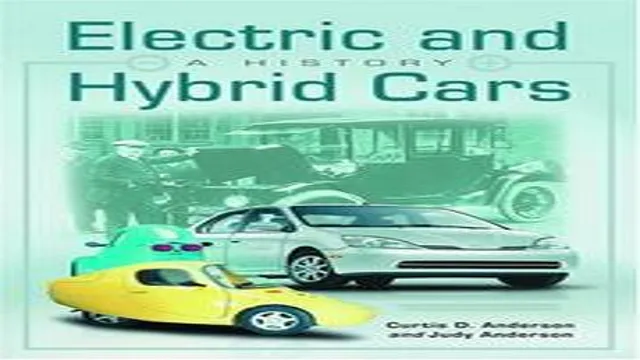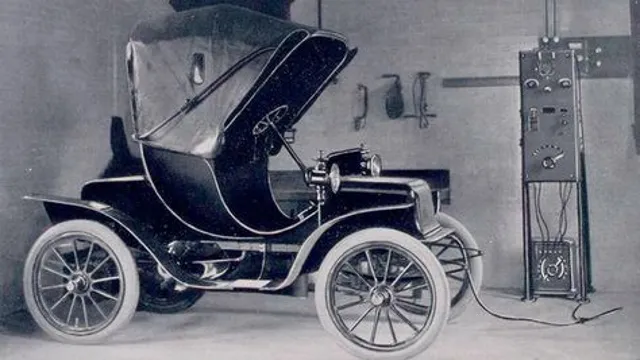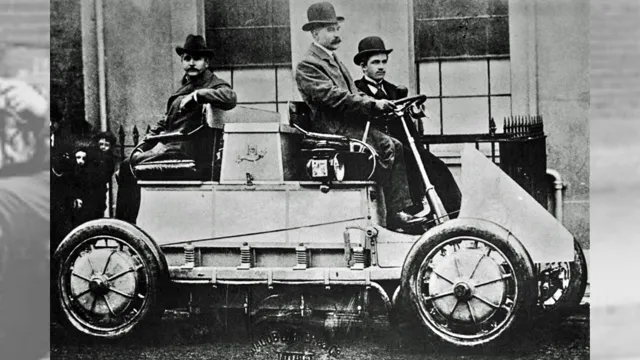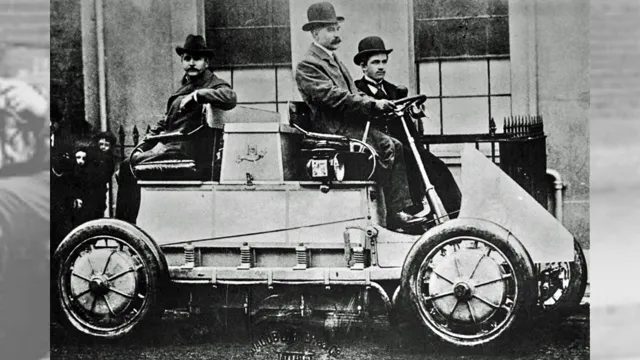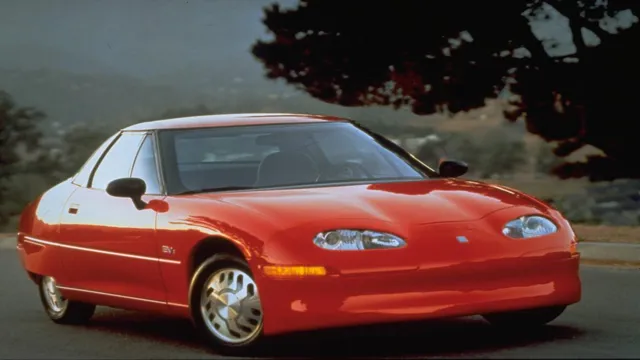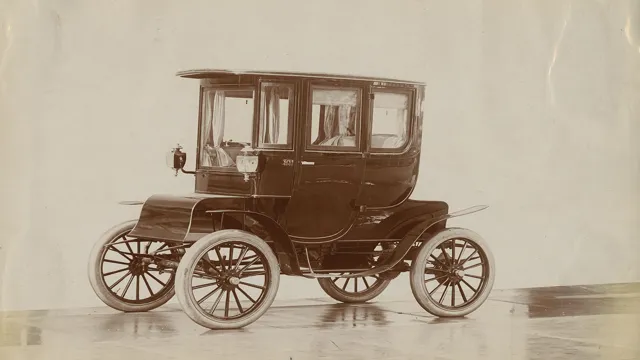The Evolution and Revolution of Electric and Hybrid Cars: A Fascinating Insight into History 2nd Ed. by Judy Anderson
Electric and hybrid cars are no longer just a futuristic fantasy or a niche market. They are becoming more and more mainstream, as people are becoming increasingly aware of the environmental and economic benefits of these vehicles. However, the history of these cars goes back much further than many people realize.
In fact, the first electric car was built in the 1830s, long before gasoline-powered cars even existed. Over the years, electric and hybrid cars have seen many ups and downs, from periods of great popularity to near extinction. In this blog, we will take a closer look at the fascinating history of electric and hybrid cars, and explore how they have evolved over time.
From the very first prototypes to the innovative and stylish models being produced today, we’ll delve into the key moments, figures, and trends that have shaped the development of these groundbreaking vehicles. So buckle up and get ready for an electrifying ride through history!
Overview of Electric and Hybrid Cars
Electric and hybrid cars have come a long way since their inception in the late 1800s. In recent years, there has been a surge in their popularity due to their eco-friendliness and efficiency. The history of electric and hybrid cars dates back to the late 1800s when hybrid cars were first manufactured.
However, it was not until the 1990s that electric cars started gaining attention. Since then, there has been significant development in battery technology, making electric cars more practical for everyday use. A great resource for learning more about the history of electric and hybrid cars is the book “Electric and Hybrid Cars: A History 2D Ed” by Judy Anderson.
This comprehensive book gives an overview of the evolution of these vehicles and how they have influenced the automotive industry. Overall, electric and hybrid cars are quickly becoming a prominent fixture on roads worldwide, and their future in the automotive industry seems bright.
The Early Years of Electric Cars
In the early years of automobiles, electric cars had a significant presence before gasoline-powered engines became more prevalent. Electric cars were relatively popular, especially for short trips because they didn’t require as much maintenance, were quieter and were considerably cleaner than their petrol-powered counterparts. However, they had a major challenge: limited range.
Early battery technology was insufficient, and it required frequent recharging, which, in turn, limited the distance electric cars could travel. With the invention of the internal combustion engine, gasoline cars became more dominant, and electric cars took a back seat – until the emergence of hybrid cars decades later. Nowadays, hybrid cars offer the best of both worlds by using an electric motor and a gasoline engine, significantly reducing emissions and extending range.
Although electric and hybrid cars are more reliable, efficient, and environmentally friendly than gasoline engines, they still have a long way to go in terms of affordability and range to win over the majority of the automobile market. Nonetheless, we have come a long way since the early days of electric cars, and with significant advancements in battery technology and greater availability of charging stations, electric cars may soon become the norm.
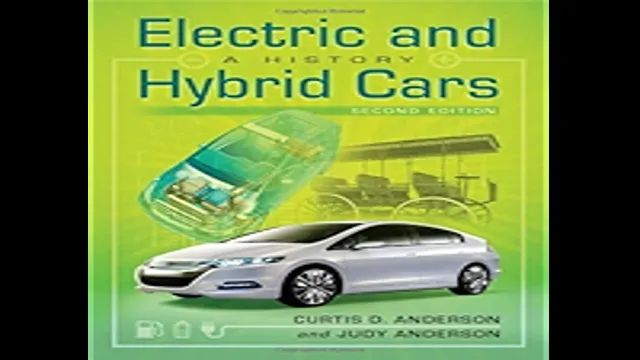
Development of Hybrid Vehicles
The development of hybrid vehicles has been a game-changer for the automotive industry, providing drivers with more environmentally friendly options for transportation. Hybrid vehicles use a combination of gasoline-powered engines and electric motors to power the car and reduce emissions. Electric cars, on the other hand, rely solely on battery power and require regular charging.
While both options have their strengths and weaknesses, hybrid cars are considered to be a more practical option for those who need longer driving distances and don’t want to worry about running out of battery power. With advancements in technology, we can expect to see even more improvements in hybrid and electric vehicles, ultimately leading to a greener future for everyone.
Advantages of Electric and Hybrid Cars
“Electric and Hybrid Cars: The Advantages You Can Enjoy” Electric and hybrid cars have come a long way since the early days of experimentation, as described in the book “Electric and Hybrid Cars: A History 2D Ed” by Judy Anderson. These days, these types of cars offer a number of advantages for drivers who are looking to save money while also doing their part for the environment. First and foremost, electric and hybrid cars are much more fuel-efficient than traditional vehicles.
This means that you’ll be able to go further on a single tank of gas or battery charge, helping to reduce your overall fuel costs. Additionally, these cars produce far less emissions than their gas-powered counterparts, which is great news for anyone who is concerned about air quality and climate change. Finally, many electric and hybrid cars offer a smoother, quieter ride than traditional vehicles, as they don’t rely on the same combustion engine technology.
All of these factors make electric and hybrid cars an excellent choice for anyone who wants to save money, reduce their carbon footprint, and enjoy a more comfortable driving experience. So why not consider making the switch to electric or hybrid today?
Reduced Emissions
Electric and hybrid cars have several advantages when it comes to reducing harmful emissions. Modern electric and hybrid vehicles produce lower emissions compared to traditional gasoline-powered cars. These alternative fuel vehicles are powered by electric motors and batteries, which rely on electricity rather than fossil fuels, reducing greenhouse gas emissions.
Furthermore, electric and hybrid cars produce zero emissions when running on electricity alone. This is especially useful in urban areas where air pollution is a significant issue. By reducing emissions, electric and hybrid cars can help reduce the negative impact on both air and water quality, and ultimately benefit both the environment and our health.
Additionally, electric cars have lower maintenance costs since they have fewer moving parts compared to traditional gasoline cars. The main drawback, however, is their upfront cost, which is frequently higher than conventional cars. However, as demand and technology improve, electric and hybrid cars will become more affordable for the general public.
Overall, the benefits of electric and hybrid cars are clear: they reduce emissions, improve air quality, and save money over time.
Lower Fuel Costs
Lower Fuel Costs Electric and hybrid cars have a significant advantage over traditional vehicles in terms of fuel costs. As these vehicles run on electricity and a combination of electricity and gas, they consume less fuel and are more fuel-efficient compared to conventional cars. This means that not only do electric and hybrid cars emit fewer harmful pollutants into the environment, but they also save their owners significant amounts of money in fuel costs.
While the initial cost of purchasing an electric or hybrid vehicle may be higher than that of a traditional car, the savings in fuel costs can quickly add up over time. Additionally, governments in many countries offer incentives for people who buy electric or hybrid cars, further reducing the overall cost of owning one. So, if you’re looking to save money on fuel costs and help save the environment, an electric or hybrid car might be worth considering.
Increased Fuel Efficiency
When it comes to choosing between an electric or hybrid car versus a traditional gasoline-powered vehicle, one major advantage is increased fuel efficiency. Electric cars are powered by electricity, which can be generated from sources like solar or wind power, reducing dependence on non-renewable fuels like oil and gas. This means that electric vehicles have zero emissions, making them more environmentally friendly and cost-effective in the long run.
Hybrid cars, on the other hand, use both a gasoline engine and electric motor, providing better gas mileage and reducing emissions compared to traditional vehicles. By utilizing electric power, both electric and hybrid cars can significantly decrease fuel consumption, allowing for a more sustainable and economical way of traveling. So, not only do these types of cars improve the environment, but they also save you money on gas.
What’s not to like?
Challenges Facing Electric and Hybrid Cars
Electric and hybrid cars are gaining momentum in the automobile industry, with a growing demand for vehicles that are environmentally friendly and energy-efficient. Despite their benefits, these vehicles still face many challenges. One of the most significant challenges is the high cost of manufacturing them, which often translates to higher prices for consumers.
Additionally, electric and hybrid cars require an extensive infrastructure to support charging stations, which can be costly and time-consuming to set up. Another challenge is the limited range of these vehicles, which means they cannot travel as far as traditional gasoline cars without requiring a recharge. This issue is further compounded by potential battery degradation over time, also known as “range anxiety.
” Nonetheless, improvements in battery technology and innovations in charging stations are leading to increased adoption of electric and hybrid cars, providing a more promising future for these vehicles. Overall, electric and hybrid cars are critical aspects of the transition towards a more sustainable and greener future, and tackling these challenges head-on will be essential to ensure their continued success.
Infrastructure Limitations
When it comes to electric and hybrid cars, one of the biggest challenges they face is infrastructure limitations. These types of vehicles require charging stations that aren’t always readily available, which can make it difficult for drivers to take longer trips without worrying about running out of battery power. Additionally, not all charging stations are created equal, meaning that it can take much longer to charge a car at some stations than others.
This can be frustrating for drivers who don’t want to waste time waiting around for their cars to charge. Ultimately, until charging infrastructure is more widely available and standardized, electric and hybrid cars will be limited in their widespread adoption.
Limited Range
The limited range of electric and hybrid cars is one of the biggest challenges facing these vehicles. While traditional gasoline-powered cars can travel hundreds of miles on a single tank, electric and hybrid cars often have a range of only 100-200 miles before needing to recharge. This can be a major impediment for drivers who need to travel long distances, making electric and hybrid cars less practical for many people.
However, advances in battery technology, increased availability of charging infrastructure, and improved vehicle-to-grid capabilities are all helping to address this issue. As more people embrace electric and hybrid cars, we can expect to see even more innovation in this field, making these vehicles more appealing and accessible to a wider range of drivers.
The Future of Electric and Hybrid Cars
Electric and hybrid cars are the future of the automotive industry. With the increasing concern and awareness of the environmental impact of gasoline-powered vehicles, more and more car manufacturers are introducing electric and hybrid models into their lineup. A book by Judy Anderson, “Electric and Hybrid Cars: A History 2d ed,” gave us an insight into the evolution and development of electric and hybrid cars throughout history.
In today’s world, electric cars are becoming more accessible, as their price becomes more affordable and the charging infrastructure continues to grow. As electric and hybrid cars become more popular, it is expected that there will be a significant decline in the use of gasoline-powered vehicles. The future is bright for electric and hybrid cars, and electric technology is rapidly evolving and improving.
It is only a matter of time before they become the norm and gasoline-powered vehicles become a thing of the past.
Conclusion
In the realm of transportation, electric and hybrid cars have come a long way since their humble beginnings. They have proven to be a viable alternative to traditional gas-powered vehicles, with advancements in technology improving their performance, range, and accessibility. As we continue to prioritize sustainability and environmental preservation, electric and hybrid cars are poised to become even more integral to our daily lives.
Who knows, one day we may look back on gas-powered cars as a thing of the past, just like we do with horse-drawn carriages. So hop on board, buckle up, and enjoy the electric ride into the future!”
FAQs
What is the focus of “Electric and Hybrid Cars: A History, 2d Ed” by Judy Anderson?
The book “Electric and Hybrid Cars: A History, 2d Ed” by Judy Anderson focuses on the history and evolution of electric and hybrid cars.
Is the book “Electric and Hybrid Cars: A History, 2d Ed” suitable for someone who has little to no knowledge about electric and hybrid cars?
Yes, the book “Electric and Hybrid Cars: A History, 2d Ed” is suitable for someone who has little to no knowledge about electric and hybrid cars. The author provides a comprehensive overview of the subject.
What are some of the key milestones in the journey of electric and hybrid cars, as discussed in the book “Electric and Hybrid Cars: A History, 2d Ed”?
Some of the key milestones in the journey of electric and hybrid cars that are discussed in the book “Electric and Hybrid Cars: A History, 2d Ed” include the development of the first electric car in the 1830s, the rise of hybrid cars in the late 1990s, and the emergence of long-range electric cars in the present day.
What are some of the environmental benefits of electric and hybrid cars, as explored in the book “Electric and Hybrid Cars: A History, 2d Ed”?
The book “Electric and Hybrid Cars: A History, 2d Ed” explores several environmental benefits of electric and hybrid cars, including reduced greenhouse gas emissions, improved air quality, and decreased dependence on fossil fuels.

